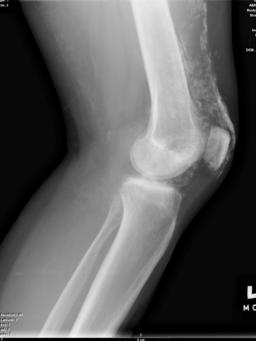What are dermatomyositis and polymyositis?
Dermatomyositis (DM) (say: derm-at-oh-my-oh-sigh-tis) and polymyositis (PM) (say: polly-my-oh-sigh-tis) are two kinds of muscle diseases. These diseases can cause pain and can make it hard for a person to get around because of muscle weakness.
Who gets DM or PM?
About 20,000 people in the United States have DM and PM. These diseases may appear at any age but are most common between the ages of 40 and 60. A form of DM can occur in children and teens.
What causes DM and PM?
DM and PM are believed to be autoimmune diseases and are caused by an immune response. Your body's immune system usually fights infection. When your immune system attacks your body's own tissues, it is called an "autoimmune disease." For example, when your immune sytem attacks your muscles, they get weak. DM and PM do not spread from person to person. These diseases are not directly inherited.
What are the signs of PM?
Muscle weakness is the main sign of PM. Weakness usually happens slowly, over months or years, but in some people, the weakness can happen quickly. The weakness is usually worse in the muscles of the hips, thighs, neck, shoulders and upper arms. The muscle weakness can make it hard for you to get around (for example, climbing stairs or reaching for overhead objects). You might not be able to do as much as you used to.
You may also have trouble swallowing. You may lose weight. You may feel tired and have pain in your joints or muscles. Over time, the pain may vary in location, and you may have a little pain or a lot of pain.
What are the signs of DM?
DM causes weakness, pain and tiredness like PM. One of the major signs of DM is a skin rash, which can start before you have any muscle weakness. The rash is red or violet, hardened or scaly. It may appear any place on your body, but it is most common on the face, eyelids, neck, chest, knuckles, knees and elbows. Some people who get the skin rash do not have the muscle weakness for years. Some people may also get puffy eyes.
How are DM and PM diagnosed?
Your doctor may test your reflexes and muscle strength, and check the pattern of muscle weakness. A blood test may be done to look for protein from muscles. Your doctor may also test how your muscles contract. Sometimes a muscle biopsy may be done. Diagnosing DM in people who have the typical rash is usually not hard. A firm diagnosis of PM in people who do not have all the usual findings can be a frustrating experience for the doctor and patient.
How are DM and PM treated?
The first choice of treatment for DM and PM is almost always oral prednisone. This is a steroid medicine that suppresses the immune system. Usually, you begin taking a high dose for one to two months. Then, the dose can be cut back over several months. You may need to keep taking the prednisone for one year or more to prevent symptoms from coming back. Your doctor will decide the best way to adjust the medicine.
About one half of people with DM or PM do not respond well to prednisone and will need to take other medicine.
How is the skin rash of DM treated?
The rash usually improves after taking the medicine. If the rash does not go away, your doctor may want you to take hydroxychloroquine (brand name: Plaquenil). This drug also suppresses the immune system. Your doctor may also prescribe a corticosteroid. Because the rash may get worse with sun exposure, you should avoid direct sunlight and use a sunscreen when you are outside.
How can pain be treated?
The most common treatments for pain are medicines like aspirin, ibuprofen (brand name: Nuprin), acetaminophen (Tylenol) and naproxen (Aleve). If these do not help your pain, your doctor may prescribe a stronger pain medicine. Other treatments that may help include hot baths, applying hot or cold packs, and stretching or exercise.
How can a person with DM or PM get around better?
Your doctor may ask a physical therapist to show you how to do stretching exercises to help you get around better. These exercises can help keep the range of motion in some of your muscles that are weak. A cane, walker or wheelchair may help people who have trouble getting around. Braces for your legs, neck or wrist are also commonly used.
Support Resources
COPYRIGHT 2001 American Academy of Family Physicians
COPYRIGHT 2001 Gale Group



